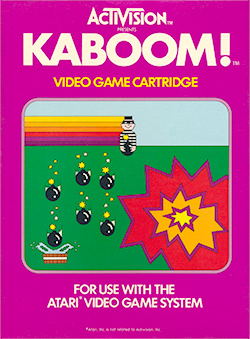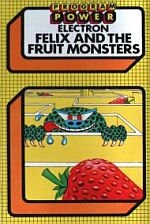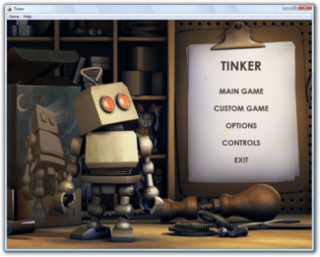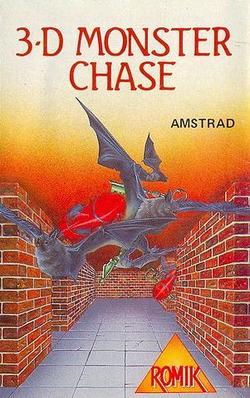
Kaboom! is an action video game published in 1981 by Activision for the Atari 2600. The gameplay was based on the Atari arcade video game Avalanche (1978), with the game now involving a Mad Bomber who drops bombs instead of falling rocks. Kaboom! was programmed by Larry Kaplan with David Crane coding the graphics for the buckets and Mad Bomber. It was the last game designed by Kaplan for Activision, who left the company shortly after the release of the game. The game was later ported by Paul Wilson for the Atari 5200 system.

Wario's Woods is a puzzle video game developed by TEC and published by Nintendo for the Nintendo Entertainment System. It was released in Japan and North America in 1994 and Europe in 1995. A spin-off of the Mario series, players control Toad in his mission to defeat Wario, who has taken control of the Peaceful Woods. Gameplay revolves around clearing each level by using bombs to destroy groups of enemies. The game also features a multiplayer mode that allows two players to compete against each other.
The Eggerland (エッガーランド) series consists of several puzzle games developed by HAL Laboratory. Its first release was in 1985 for MSX computer systems. The gameplay is almost exactly the same across the series, with only a few changes over the years, mainly graphical.

Hexic is a 2003 tile-matching puzzle video game developed by Carbonated Games for various platforms. In Hexic, the player tries to rotate hexagonal tiles to create certain patterns. The game is available on Windows, Xbox 360, Windows Phone and the web. Many clones are available for Android and iOS. The game was designed by Alexey Pajitnov, best known as the creator of Tetris. While most earlier releases of the game were developed by Carbonated Games, the most recent version released for Windows and Windows Phone is developed by Other Ocean. The name is a portmanteau of the words "hectic" and "hexagon".

Monster Max is a 1994 action-adventure puzzle video game developed by Rare and published by Titus France in Europe for the Game Boy. The player is the titular aspiring rock star, who, in an attempt to fight King Krond who bans all music, traverses nine floors of the Mega Hero Academy. Floors consist of diversely-designed rooms of puzzles to solve, the player having to figure out the order of actions to take.

Smart Bomb is a timed puzzle video game for the PSP developed by Core Design. It was one of the first video games to be released on the PSP and was at first set to be a big game, yet many control flaws and repetition of levels meant that it was a relatively low selling game. This is the last game Core Design worked on before it was renamed Rebellion Derby the following year; R.D. would close its doors in March 2010.

Oids is a multidirectional shooter developed and self-published by FTL Games in 1987. The game was originally released on the Atari ST, followed by a B&W version for the classic 68k Macintosh in 1990. The Atari ST version, written by Dan Hewitt, was a cult favourite in the UK, where it received rave reviews.

Godzilla: Kaijū Daikessen is a 2D fighting video game released in 1994 for the Super Famicom. The game was developed by Alfa System and published by Toho. It was the second game based on Toho's Godzilla franchise to be released on Super Famicom, following 1993's Super Godzilla.

Felix and the Fruit Monsters is a video game written by John Chaytor and released by Micro Power for the BBC Micro and Acorn Electron in 1983. A sequel to platformer Felix in the Factory, it is a maze game resembling Pac-Man, but with different gameplay.

Superman is a video game programmed by John Dunn for the Atari Video Computer System and released in 1979 by Atari, Inc. The player controls Superman, whose quest is to explore an open-ended environment to find three pieces of a bridge that was destroyed by Lex Luthor, capture Luthor and his criminal gang, and return to the Daily Planet building. The game world is populated by antagonists such as a helicopter that re-arranges the bridge pieces and roving kryptonite satellites that cause Superman to revert into Clark Kent.
MaBoShi: The Three Shape Arcade is a WiiWare puzzle video game developed by Mindware Corp. Its Japanese title, Katachi no Game: Maru Bou Shikaku. It was released in 2008, in Europe on August 29, in Japan on October 7, and in North America on December 29.

Tinker, also known as Microsoft Tinker, is a puzzle video game developed by Fuel Industries in which the player controls a robot through various mazes and obstacle courses. It was originally released on September 23, 2008, as part of Windows Ultimate Extras, and contained 60 levels, including a 20-level tutorial. A free map editor was also released; however, it is not compatible with the Games for Windows – Live version of Tinker. It is only compatible with the Windows Ultimate Extras version.
Kubos, also known as Precipice in North America and Nalaku in Japan, is a puzzle video game developed by Skip Ltd. and published by Nintendo for the Nintendo DSi's DSiWare digital distribution service.
Chocolate Castle is a puzzle video game developed by New Zealand–based company Lexaloffle and published on April 2, 2007. The game was developed by Lexaloffle's owner and operator Joseph White, who designed Chocolate Castle as a platform for further puzzle games. In this game, players clear a castle's rooms of chocolate by combining smaller pieces into large bars and commanding animals to consume them. After clearing a room, they can select new rooms that are still yet to be cleared. The full version of the game includes a room editor for players to create their own rooms; players may upload these newly created rooms to Lexaloffle's website for other players to attempt.

Gyromancer is a puzzle and role-playing video game developed by PopCap Games in collaboration with Square Enix. The player moves through a map of an enchanted forest, battling monsters using their own summoned monsters through a puzzle-game battle based on PopCap's Bejeweled Twist. In these battles, the player rotates groups of four in a grid of gems to line up three or more jewels of the same color; when enough lines have been created damage is dealt to the enemy. Between battles, a story is told through a series of cutscenes, while the player and the summoned monsters gain experience and power using role-playing elements.

Heron: Steam Machine is a puzzle video game by Triangle Studios, released for WiiWare and iOS. It is a new take on the Pipe Mania concept, adding arcade elements such as multiplayer gameplay and changing the format to a filled board with rotatable blocks rather than being able to place new blocks on the board.
Addictive Games was a UK video game publisher in the 1980s and early 1990s. It is best known for the Football Manager series of games created by company founder Kevin Toms. The company was originally based in Milton Keynes, England, and later relocated to Bournemouth, in southern England.

Tetris Giant, known as Tetris Dekaris in Japan, is an arcade game released in Japan in 2009 by Sega that features a giant version of the game Tetris. It is played on a large 70" DLP Projection Monitor, running on Sega System SP. It is controlled using giant joysticks, the right joystick being slightly lower than the left one, with a built-in shaker "rumble" motor, a device that Sega refers to as "Deka Lever". The playing field is 6 cells wide by 7 cells high as opposed to almost universal 10 cells wide by 20 high. The game can be played with up to two players.

3-D Monster Chase is a first-person maze game written by Dave Noonan and released by Romik in 1984 for the Amstrad CPC and ZX Spectrum. A version for Camputers Lynx titled 3-D Monster Craze was developed by Camsoft.

Turnabout, known in Japan as Migi Hidari (U-SA) is a puzzle video game developed by Artdink for the PlayStation. The player's objective is to rotate the stage's screen 90 degrees clockwise or counterclockwise until colored balls fall and touch other balls or stationary blocks of the same color, causing the matched objects to disappear. The round is complete when all colored objects have been removed.















